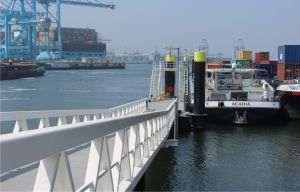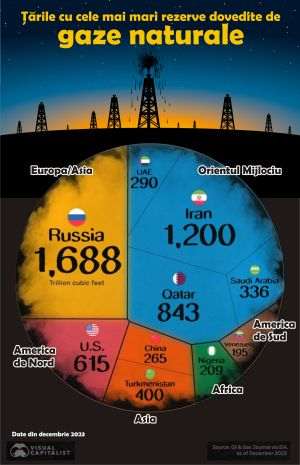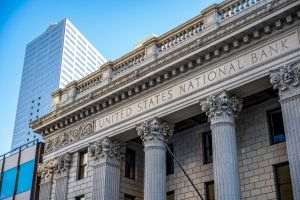The BRICS summit that is taking place these days in Kazan, Russia, also has on its agenda the request made by Turkey to acquire the status of a full member of that economic organization, after until now it had observer status. Turkish President Recep Tayyip Erdogan made this request as early as 2018, but the talks remained unresolved, being reopened in 2023, and the request was submitted in the spring of 2024, as Turkey sees BRICS as an opportunity to diversify its alliances economic and to strengthen its status as a regional power in the Near East and the Middle East. If Turkey's request is approved at today's meeting of the BRICS leaders, we will face new challenges in redefining global power, especially in the Middle East, which has been torn for more than a year by the open conflict between Israel - on the one hand, and Hamas, Hezbollah, the Houthi rebels and Iran - on the other side.
But what is BRICS? We are talking about an intergovernmental organization initially made up of Brazil, Russia, India and China in 2009 in Yekaterinburg, Russia. His conception was influenced by a 2001 report by economist Jim O'Neill, which identified these countries as emerging economies with high growth potential capable of countering the economic influence of the G7 group. South Africa was invited to join in 2010, transforming BRIC into BRICS.
According to official documents, the primary purpose of BRICS is to create a fairer global economic balance by providing an alternative platform for emerging countries to coordinate economic and financial policies. Over the years, the organization has focused on major topics such as the reform of global institutions, infrastructure development and the fight against poverty through financial initiatives such as the New Development Bank (NDB) and the Contingent Reserve Arrangement (CRA), which provides financial support to members in times of crisis.
• $34 billion in financing through the NDB
During the period 2012-2020, BRICS went through a series of significant developments, strengthening both institutionally and as a platform for cooperation between emerging economies. In 2012, the bloc announced the BRICS Cable project, a submarine fiber optic cable that would connect the countries of the group and the rest of the countries of the global south. The main idea was to reduce the dependence of third world countries on the existing telecommunications system, which BRICS says is controlled by the West.
In June 2012, the organization offered to invest $75 billion in IMF investments on the condition that the BRICS have a greater weight in the fund's decision-making process. As this plan failed, in 2014 the member states decided to create their own financial institution - the New Development Bank (NDB) which was officially launched in 2015 and is based in Shanghai, China. The NDB was created as an alternative to Western financial institutions such as the World Bank and the International Monetary Fund (IMF). The bank's initial capital was $100 billion, with all countries having an equal share. No country can increase its quota without the approval of other members. The BRICS bank focuses on lending to finance infrastructure projects, "sustainable development" projects and developing relationships with other multilateral organizations and banks. Since its inception, it has financed 96 projects totaling $34 billion. The figure may seem impressive, but in reality it represents only a fraction of the loans granted by the World Bank. By comparison, in 2021 alone, the World Bank disbursed $98 billion in loans, grants and investments.
According to official BRICS data, the NDB has played a crucial role in financing projects related to economic recovery following the COVID-19 pandemic, providing billions of dollars in loans to support member states of the organization to cope with the global economic crisis.
In addition to the NDB, BRICS created another important financial mechanism in 2014: the Contingent Reserve Arrangement (CRA). It is a $100 billion reserve fund intended to help members deal with liquidity crises and stabilize financial markets in the event of external economic shocks. The CRA was designed as an alternative to the IMF, providing support without strict economic policy conditions, unlike traditional international financial institutions
Another focal point of BRICS activity during this period was the emphasis on the cooperation of member states south of the equator, by creating a model of collaboration among developing countries aimed at supporting economic growth and knowledge exchange among emerging economies. This initiative was materialized through the creation of academic and research platforms, such as the BRICS Academic Forum and the BRICS Research Council, which facilitated collaboration between experts and member state governments.
• BRICS expansion contested by India and Brazil
In the past three years, BRICS has evolved significantly, emphasizing its expansion and the issue of "de-dollarization", that is, reducing dependence on the US dollar in international trade transactions. At the 2023 summit, hosted by South Africa, the decision was made to invite six new members: Saudi Arabia, Iran, the United Arab Emirates, Egypt, Ethiopia and Argentina. However, in the context of a political change in Argentina, the new president, Javier Milei, withdrew his country's request to join BRICS, on the grounds that he does not want Argentina to be allied with "communist regimes".
The BRICS expansion is seen as a measure to strengthen the organization's influence on the world stage. China has championed this expansion as an opportunity to turn BRICS into an economic counterweight to the G7, while Russia has promoted the integration of new members to reduce diplomatic isolation caused by international sanctions after the invasion of Ukraine. However, India and Brazil were more reluctant, fearing possible Chinese dominance and losing their influence within the economic bloc.
Brazilian President Jair Bolsonaro, who led the country from 2019 to 2022, has been skeptical of BRICS expansion, arguing that such a move could diminish Brazil's influence within the organization. Brazil advocated a phased approach, with new members initially having observer status, becoming full members only after meeting strict criteria. This skepticism towards enlargement was motivated in part by fears of China's growing influence within the bloc and the fact that many of the countries seeking to join were Muslim states, which could have created new political and economic dynamics in the BRICS framework.
Although Brazil continued to actively participate in BRICS summits and collaborate on joint economic projects, there was a slight distancing from China and Russia. Bolsonaro has had a troubled relationship with China, mainly due to public criticism of his handling of the COVID-19 pandemic, which has affected cooperation between the two countries. Brazil has also tried to maintain a balanced position on the conflict in Ukraine, avoiding clear alignment with the Western sanctions policy against Russia.
In 2023, with the return to power of Luiz Inacio Lula da Silva, Brazil began to adopt a more open approach within BRICS. Lula supported the idea of cooperation among the states of the Global South, members of the organization, and resumed economic relations with China in a more pragmatic way. However, Brazil continued to express reservations about an accelerated expansion of BRICS, trying to find a balance between maintaining its influence in the bloc and promoting strategic alliances outside it.
• De-dollarization, BRICS theme after the war started by Russia in Ukraine
One of the most debated topics within BRICS in recent years has been the initiative to create a common currency to replace the dollar in trade transactions between the bloc's members. This discussion is driven by China and Russia, which are trying to reduce dependence on the dollar, especially in the context of economic sanctions imposed on Russia after 2022. However, although the theme of "de-dollarization" is heavily promoted, the realization of a common currency faces many challenges, including economic differences between BRICS members and the complexity of an economic transition of such magnitude.
A key aspect is the involvement of China, which has strongly supported the use of the yuan in international transactions. Already, in the context of Western sanctions, Russia has increased its transactions in yuan, and other BRICS countries have begun to explore similar solutions to avoid exposure to dollar fluctuations.
However, although the concept of a common currency has been intensively discussed, no clear consensus has yet been reached, and the immediate prospects for such a currency remain uncertain, given the technical and political complexity of such a project.
As can be seen, BRICS is in a period of transformation as the bloc's expansion and economic ambitions increase. While there are tensions among its members - with India worried about China's influence and Brazil concerned about its loss of influence - the organization continues to attract interest from many emerging economies looking for alternatives to the Western financial system. The themes of de-dollarization and a common currency remain major challenges, but also opportunities for BRICS to strengthen its position in the global economy. The success of these initiatives will depend on the bloc's ability to overcome internal differences and build consensus around a common strategy.
• BRICS in numbers
According to World Bank data, BRICS member states occupy 26.7% of the total surface of the Earth, have 41.5% of the world's population (3.25 billion people), have a total Gross Domestic Product of about 26 trillion dollars, have 25% of the world's economic output and have foreign exchange reserves of more than 5 trillion dollars.














































